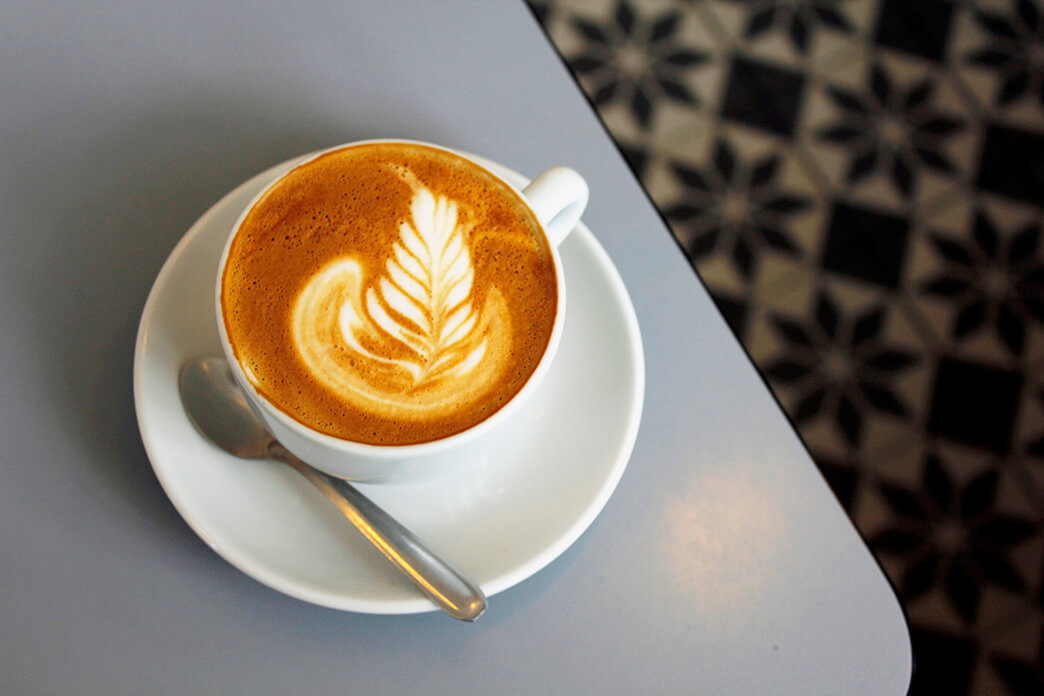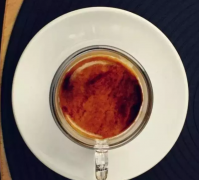How do you order espresso? how should I drink espresso?

Professional coffee knowledge exchange more coffee bean information please follow the coffee workshop (Wechat official account cafe_style)
The standard practice of espresso what is authentic espresso
Espresso is a highly concentrated, bittersweet coffee that originated in Italy in the early twentieth century. Translated from Italian, the word espresso refers to the speed and nature of single service, with slower and more public methods of brewing coffee [1]. Each cup of espresso is ordered according to the customer's request, not brewed according to the expected demand. Usually served in steamed stuffed bun cups or used with other ingredients to create another drink, such as cappuccino or Florna corretto, espresso has become representative of coffee culture in many coffee consuming areas.
Content [display]
Features
Although the taste of coffee will vary greatly, depending on what you drink (including barbecue), the quality of grinding, and brewing techniques, a well-crafted espresso usually has a heavy body, rich texture, and bittersweet taste. Each lens should have a layer of Klima (foam) on the surface, usually golden to dark brown. A cup of espresso is usually made from seven to eight grams of ground coffee, resulting in between one and a half ounces of coffee. This ratio represents highly concentrated coffee, which contains more caffeine per roll and is generally thought to be stronger than brewed coffee.
Make espresso
There are several types of coffee-based drinks, but they are all based on one or more photos of pure espresso. Espresso is brewed in some kind of coffee machine, "press" hot water through a dense hockey puck of fine ground medium to the dark roasted coffee.
Espresso-0
Preheat your cup, which is a big difference, especially if you drink doubles or if you are doing it for several people. When you hit the bottom of your cup, or finish the last person's coffee, the first shot may be very cold. Boiling water usually makes the cup too hot to hold, but it helps to fill the hot water with a faucet. If you put hot water in a cup before drinking coffee, they will be ready when you are ready. Before you start, you have to heat the brewing head. If you don't, the heat of the water will be dissipated by the heated brewing head. If you are making multiple cups away from the brewing head between the machines, the cup should keep it warm.
Please make sure that the coffee is used on the floor of the coffee machine. If the coffee is too thick, the water will be too fast to extract nectar from the coffee. If the ground of the coffee is too fine, the water will not cross the ground correctly, which may lead to overexploitation. Think of salt as a general rule. The best, of course, is to grind yourself, but you can tell your coffee supplier to grind the coffee machine. Until you get an exact fine on how good the trick is, you may want to buy front ground coffee to understand what is right. Coffee is definitely a place where the rotary blade grinder will not work.
Please make sure that the filter basket is full and tamped correctly. This is another place where a small experiment is orderly. If the coffee is pounded too hard, the water will not flow. If it is not tamped hard enough, the water will run too fast on the ground. Each machine is a little different. Experiment is the key. So make sure the coffee is level. If not, you will provide a path with the least resistance to let the water pass through.
When you see the coffee flow thinning out of the machine, turn off the machine or move the cup away. If you keep going at this point, you're just injecting bitter garbage into your cup. The more it runs out, the worse it tastes (more information about this method). If you want a longer drink, make a pair, or add hot water to your espresso (America).
Espresso should be served immediately. Ideally, Klima's coffee should be a color, preferably a very light honey color. If Klima has dark stripes, your beans may have burned too much during the roasting process. In addition, the temperature of the machine itself may be too high and the coffee is scorched by water. If there is an uneven Klima, then whether it is on the ground, or the coffee has been left for too long, or the dose in the hand has not been firmly rammed.
History
Kaffeemaschine
An early coffee machine style.
In the 20th century, the rise of espresso as a popular coffee shop paralleled the technological progress of coffee machines. However, early coffee brewing methods also produced a modern concentration. Like espresso, coffee brewed in an Ibrik (or related brewer) is black-roasted, unfiltered, thick, and bittersweet. In addition, when brewed correctly, this coffee has a layer of foam, just like the Klima of espresso. Traditionally serving strong and sweet, coffee in the Middle East and Southeast Europe is a natural step towards technicalogical that will lead to modern espresso [2].
In 1901, the Louis Bezzera patent was considered the design of the first espresso machine. It is based on the principle of an early coffee pot (similar to a mocha pot), which uses steam pressure to push water into an area where it is pressed by gravity into the reservoir through coffee. However, Bezzera's system uses steam pressure to force hot water directly through coffee and cups. His design allows customers to provide fresh brewed coffee. Bezzera will sell the patent to Desiderio Pavoni, which will start producing coffee machines for sale in 1905. Other Italian manufacturers will soon follow suit.
The early coffee machines were large and gorgeous, using gas as a source of heat. They consist of large cylindrical reservoirs with several vents, valves, and gauges protruding from the front and side at the end. Finally, the coffee machine is a gorgeous puppet at the top, usually an eagle.
These early machines were limited to the pressure that steam could produce-about one and a half atmospheric pressure (meaning one and a half times the pressure exerted by the Earth's atmosphere), not high enough to fully extract coffee oil or use heavily packaged ice hockey coffee. Higher steam pressure can generate more calories from using, but the hotter water causes the coffee to become overheated, damaging the taste of the fruit cup.
In 1947, Azili Gaggia developed modifications to the coffee machine, instead of using steam pressure to drive water through the coffee, but using a manually pulled lever to press the piston against hot water through the coffee. The higher pressure generated by this method allows for a tighter packaging of ice puck coffee and a fuller extraction of coffee flavor. In addition, through this method, the signature Klima floating on the top of properly prepared espresso was first born [5]. Despite continuous improvement, modern espresso manufacturers are still mainly based on Gaggia's model [6].
One of the disadvantages of the Gaggia machine is that both espresso and steam water are heated in the same tank. The water will slowly heat up and become obsolete over time, affecting the quality of the espresso produced. In 1961, FAEMA (Fabbrica Apparecchiature Elettromeccaniche e Affini or factories that produce electrical and mechanical equipment in English and the like) developed E61, which will heat water for use. In the brewed espresso, it gets the brewing head before passing through the old water tank. Fresh water will never interact with older water, which will be reserved for steam production only. Other improvements to E61 include an electric pump, a calcium water mechanism (so as not to contaminate the machine's sediment), and the ability to circulate water through the group head to make it warm before brewing does not have to run water through it first [7].
.
Important Notice :
前街咖啡 FrontStreet Coffee has moved to new addredd:
FrontStreet Coffee Address: 315,Donghua East Road,GuangZhou
Tel:020 38364473
- Prev

How to make a mellow espresso espresso perfect?
Professional coffee knowledge exchange more coffee bean information please follow the coffee workshop (Wechat official account cafe_style) espresso standard practice what is authentic espresso is the most popular drink in the world, hundreds of millions of cups of coffee are drunk every year! Some coffee lovers think that a perfect espresso is like a "Scientific American" miscellaneous.
- Next

Pour a cappuccino for aunt. Cappuccino.
Professional coffee knowledge exchange more coffee bean information please follow the coffee workshop (Wechat official account cafe_style) maybe you are not drinking cappuccino at all? Do you really understand the meaning of cappuccino? Pouring a cappuccino for my aunt is a particularly fun thing these days, which may be familiar to many people who watch live broadcasts or play games with landlords. Mainly because of an anchor, let this sentence
Related
- Beginners will see the "Coffee pull flower" guide!
- What is the difference between ice blog purified milk and ordinary milk coffee?
- Why is the Philippines the largest producer of crops in Liberia?
- For coffee extraction, should the fine powder be retained?
- How does extracted espresso fill pressed powder? How much strength does it take to press the powder?
- How to make jasmine cold extract coffee? Is the jasmine + latte good?
- Will this little toy really make the coffee taste better? How does Lily Drip affect coffee extraction?
- Will the action of slapping the filter cup also affect coffee extraction?
- What's the difference between powder-to-water ratio and powder-to-liquid ratio?
- What is the Ethiopian local species? What does it have to do with Heirloom native species?

